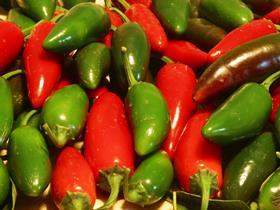
The US Salmonella outbreak, which poisoned an estimated 1,400 people, appears to have finally drawn to a close this week, although the country’s authorities admit they may never discover its definitive source.
The two US government bodies that carried out the investigation into the biggest outbreak of its kind for at least a decade, the Food and Drug Administration (FDA) and the Centers for Disease Control and Prevention (CDC), said the number of reported cases had dropped to “normal” levels earlier this month.
“This is an important indication that this particular outbreak is over,” Dr Robert Tauxe, deputy director of CDC’s foodbourne illness unit told Associated Press.
The FDA has now lifted its warning over the consumption of Mexico-grown jalapeño and serrano peppers, but the agency said they could not offer consumers an assurance that there would not be another outbreak of the particular strain of Salmonella.
“None of us can provide a cast-iron guarantee that Salmonella Saintpaul will not re-emerge,” FDA food safety official Dr David Acheson told the news agency. “We have not identified the total source of this.”
The Salmonella outbreak, which was linked during the investigation to a variety of products, including tomatoes and coriander, was initially traced back to a Mexico-grown jalapeño pepper at a Texas fresh produce distribution centre. But investigators admitted that no trace of the bacteria could be found at the farm from which the pepper was sourced.
While the Saintpaul strain was also found in irrigation water at a serrano pepper farm in Mexico, FDA officials admitted that no proof could be found that the site was the source of the outbreak.



